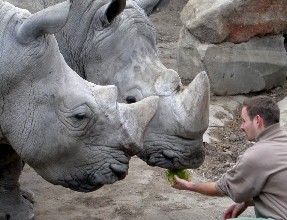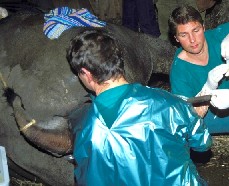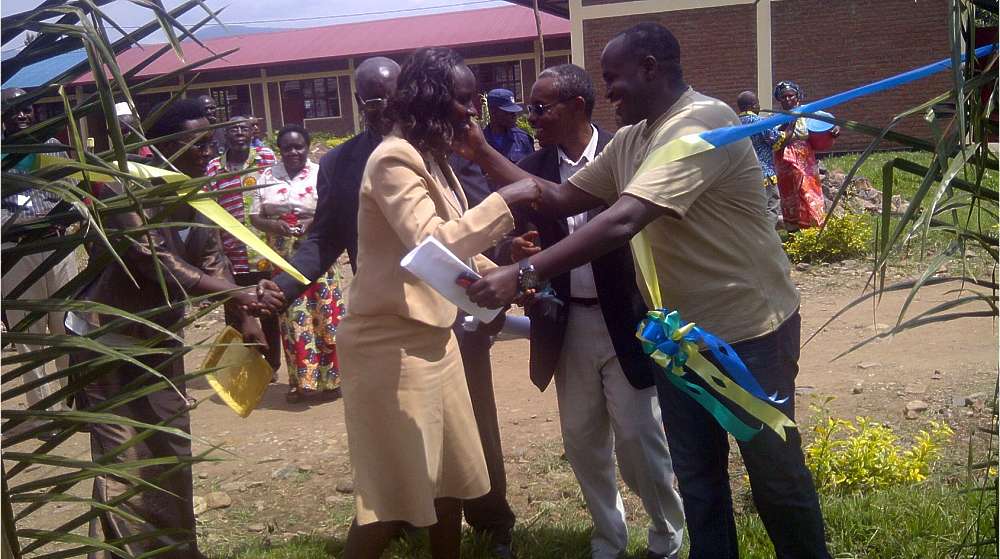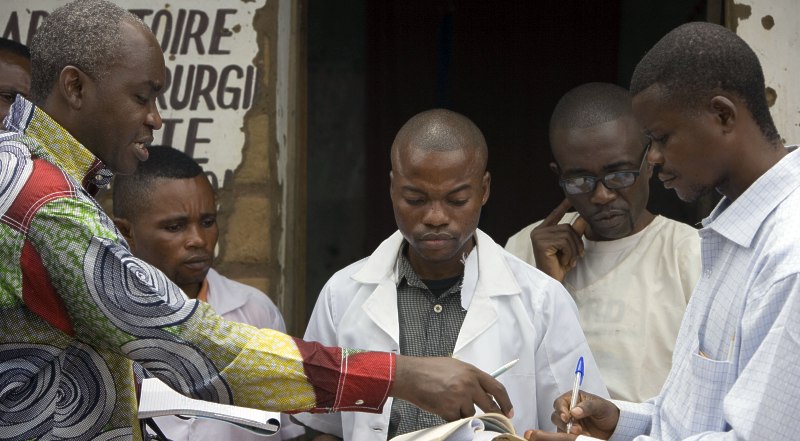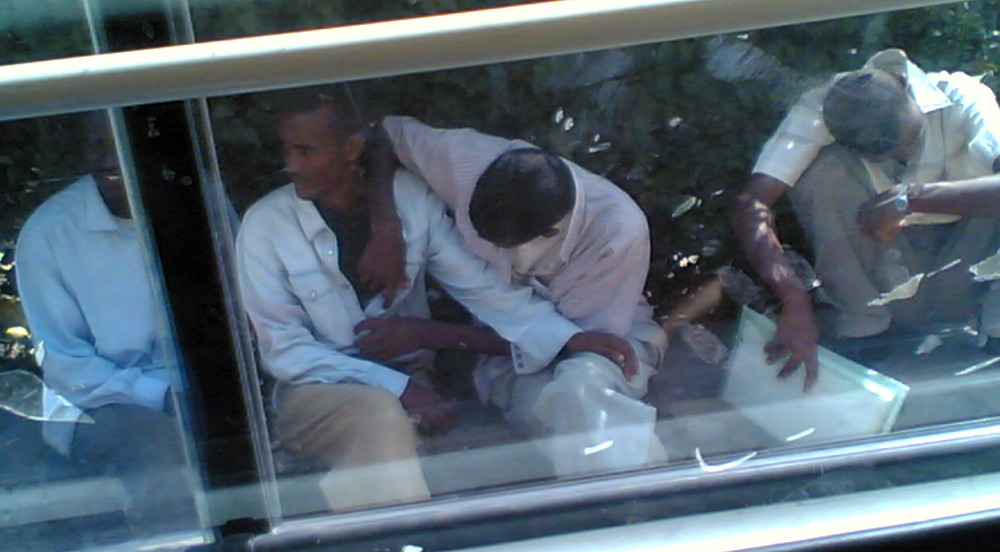|
Africa | World Environment - Nature | Science - Education First-ever rhino artificially inseminated
Lulu herself is a southern black rhino that was brought up in captivity. Her sub-species is no longer threatened with extinction after decades of protection and breeding efforts by authorities in Southern African nations. During the last decade, these efforts brought the southern black rhino population up from around hundred animals to a current level of 11,000 rhinos, prompting the resumption of a limited rhino hunt in Southern Africa this week.
Najin four years ago even managed to give birth to a rhino calf under natural circumstances. Since that, however, the Czech rhino is not getting pregnant and she is threatened with the same fate as her sisters in captivity if not a successful artificial insemination takes place within short time. According to the German researchers, the survival of the northern black rhino sub-species is still possible if large efforts are made. "Also the southern black once were close to extinction," says Mr Hermes. With support from the International Rhino Foundation and the organisation SOS Rhino, the research team now hopes to embark on a new breeding programme for the northern sub-species. While Lulu so far seems to be a success story, the artificial insemination of a rhino cow however turned out a complicated affair. Standard fertilising equipments that are used for big animals proved useless as the female genital is extremely deep; up to one and a half meter. In addition, the rhinos' cervix is "very firm and strongly folded," complicating the injection of rhino semen into the cow. - In addition, rhinos are very dangerous, the German researchers noted. All investigations into the cows' fertility, such as ultrasound scanning, had to be executed in total narcosis. A special anaesthesia protocol had to be developed by a researcher team at the Austrian Salzburg Zoo and drugs about 5000 times stronger than those used on humans were injected to the rhino. Lulu nevertheless has survived the special treatment and is now in the fifth month of her pregnancy. She is currently taken care of by veterinaries at the zoo in Budapest, Hungary. "We are confident that she will give birth to a healthy calf in August next year," commented Dr Hermes. This is already the 20th attempt of artificial insemination of 11 southern black rhino cows living in captivity worldwide. All have failed before Lulu's seemingly successful pregnancy. "Three times before, we achieved pregnancy, but they only lasted a couple of weeks," says Dr Hermes. With Lulu, this is the second attempt. By staff writers © afrol News - Create an e-mail alert for Africa news - Create an e-mail alert for World news - Create an e-mail alert for Environment - Nature news - Create an e-mail alert for Science - Education news
On the Afrol News front page now
|
front page
| news
| countries
| archive
| currencies
| news alerts login
| about afrol News
| contact
| advertise
| español
©
afrol News.
Reproducing or buying afrol News' articles.
You can contact us at mail@afrol.com


